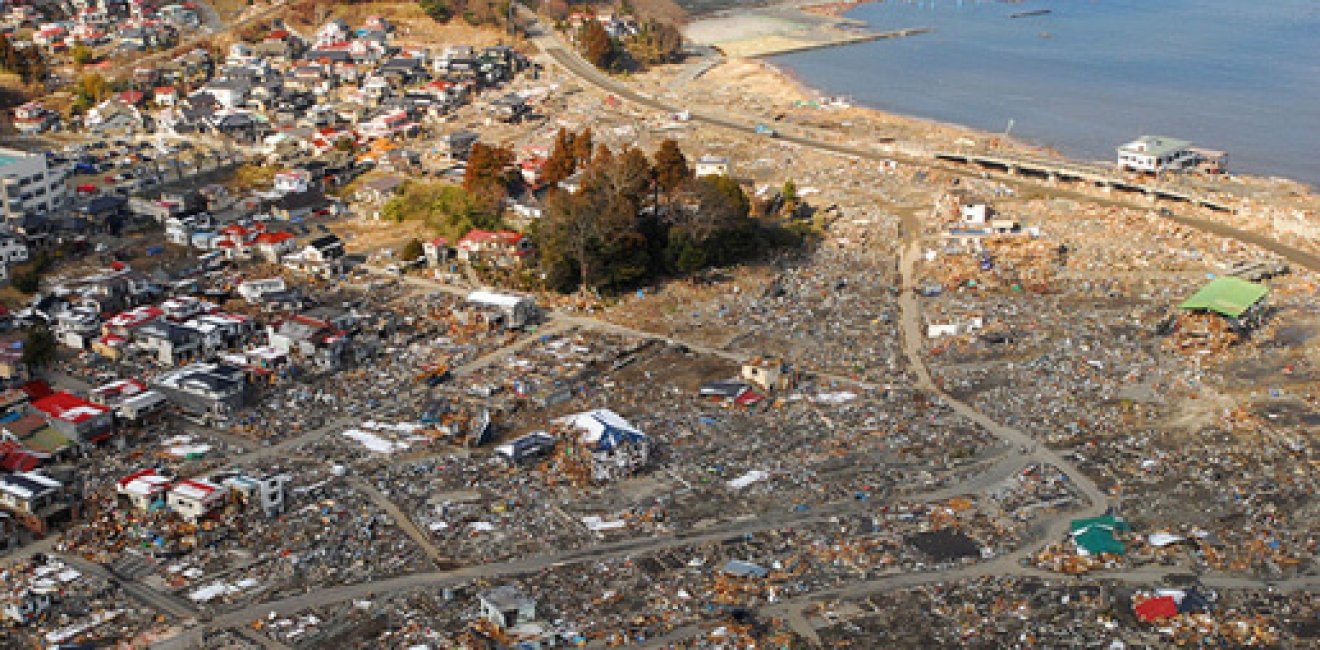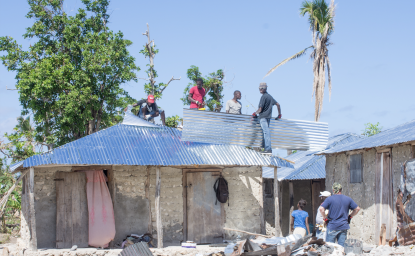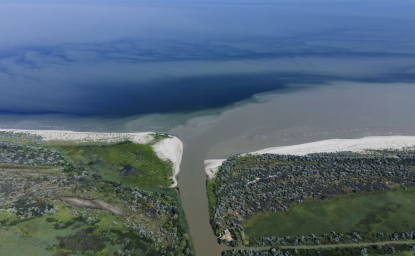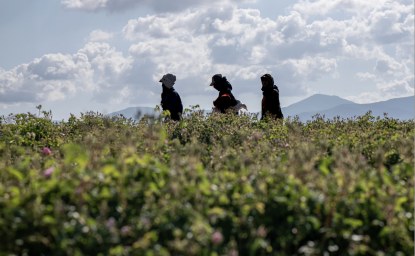As policymakers respond to the threat of climate and environmental change, the concept of resilience has found itself at the center of discussion. Few scientists and policymakers, however, can come to a consensus on how to define, evaluate, and build resilience.
The concept is sometimes defined as “the ability to bounce back.” But others argue getting back to a baseline is not enough – the goal should be to come back stronger, better positioned for the future, to “bounce forward,” as Professor Patricia Longstaff of Syracuse University put it at the Wilson Center last fall.
For many who see resilience as a useful way to explain the connected nature of human and natural systems, this lack of consensus is a problem. “Two-point-six billion people will be added to the world population before 2050, and 98 percent of this population will be from the developing world, with almost 50 percent of it in sub-Saharan Africa,” said José Miguel Guzmán of ICF International. Understanding vulnerability and how to address it in development is therefore paramount.
“Good policymaking needs to be based on sound evidence, and science can provide that evidence,” said Georgina Mace, a fellow in the UK’s Royal Society and director of University College London’s Center for Biodiversity and Environment Research. In an effort to better define resilience, the Royal Society co-hosted a day-long forum with leading thinkers at the Wilson Center in November.
The Importance of Data
The first response, 24 to 48 hours after a natural disaster, “will always be local,” said Longstaff. “There isn’t a military in the world that can get there before that, and unfortunately, that’s when the most people die.”
Good data is critical to understanding how to intervene and what to strengthen or change, she said. “People have a tendency during these kinds of situations, such as tsunamis and hurricanes, to hide what’s not working” – a tendency that scientists are working against. “Resilience fails when the community…has no trusted source of information.”
Diane Davis: Social interaction key to urban resilience
Not all data is created equal though, said Jon Kurtz, Mercy Corps’ director of research and learning. What’s most important to understanding the vulnerability or resilience of a community is how it responds to “shocks” – abrupt single incidents, like natural disasters or violent conflicts. “Resilience is like safety,” Longstaff said. “You can measure the stopping distance of a car, but you’re really not going to know how safe it is until you smack it into something.”
Kurtz has employed an approach at Mercy Corps based on testing predictive power and data against post-shock outcomes. “What tends to happen is that people stop there,” Kurtz said, and apply their findings on one aspect of resilience to all their efforts. But data on food security, for example, may not be transferable to understanding flooding or drought. Communities react differently to different challenges. This is especially true when talking about scales beyond the local level. “When we start to talk about subnational levels and market systems, those are a lot fuzzier and don’t really lend themselves to quantifying,” he said.
The language and approaches used by researchers in different fields may play a role in making data less accessible to others, said Jason Bremner of the Population Reference Bureau. PRB does research on topics that can influence resilience – reproductive health, population dynamics, and their impacts on the environment – and Bremner believes that community-based climate adaptation projects can learn a lot from the integrated population, health, and environment (PHE) approach they advocate for, but both communities struggle with understanding resilience.
Community-based adaptation and PHE projects “are not really focused on climate change resilience; they are not using a lot of the same language,” he said. Absent a clear framework about how to talk about resilience, they are not as useful to each other – and the communities they serve – as they could be.
What Interventions Are Most Successful?
Every community will respond to a crisis in an attempt to cope, but often, these coping mechanisms – whether on an individual or more systemic level – only serve to exacerbate the situation.
“There’s a lot of important learning around some of the big disasters we’ve had,” said Alice Thomas of Refugees International. “The key is to figure out which coping mechanisms are good…and which coping mechanisms lead to increased vulnerability the next time the shock comes.”
One of the most frequent and potentially devastating results of climate change is displacement. In 2012, “more than 32 million people were displaced by weather-related disasters, and that is twice as many as the year before,” Thomas said.
Richard Black on UK climate-migration report, “trapped” populations
Researchers still struggle to pinpoint the exact causes of displacement, especially when it comes to environmental change. Likewise, Thomas believes migration should be re-evaluated in terms of whether it’s seen as a positive or negative coping mechanism. “Migration has been looked at as a positive coping mechanism because of remittances, but…in 42 percent of the poorest households…the head of household is leaving, and they may not come back, creating social vulnerability for the family.”
Clive Mutunga of Population Action International said there are three main trends in population dynamics driving ecosystem degradation and climate vulnerability: urbanization, a rising middle class, and rapid population growth. Population growth, while not an issue everywhere, is especially pivotal in regions with poor access to family planning, like sub-Saharan Africa and portions of the Middle East and South Asia, which also tend to be areas vulnerable to climate change. “Across the board, women would like to have fewer children than their mothers,” Mutunga said, and while “fertility is expected to decline, it might not decline at the same rate assumed by the United Nations.”
Uncertainty a Challenge, But Risk Reduction Crucial
The biggest challenge to improving resilience, said Nalini Rao of ICF International, is the “cascade of uncertainty” surrounding the effectiveness of current approaches.
“Ecosystem-based approaches are a very low risk approach, but they’re almost never enough on their own,” said Longstaff. The task of strengthening vulnerable communities is almost always a multi-stage and multi-sectoral effort that varies by locality.
Often, “adaptation projects…don’t work [because the] local people haven’t been included,” said Petra Tsachkert of Pennsylvania State University’s Earth and Environmental Systems Institute. Efforts to recover from Hurricane Katrina illustrate the importance of community involvement and cooperation.
“Plan for the Future, a business group, came up with this rebuilding plan,” said Daryl Malek-Wiley, a Sierra Club activist based in New Orleans, but they “soured for all [the] future any discussions over areas of what not to rebuild, because they put this [map] up and said, ‘These green dots we will not rebuild,’ and people saw this map and said, ‘My house is there.’ It set up this chain reaction of politics… We needed to have this discussion…but once it got into the press like this, there was no way.”
Katrina “was a man-made disaster, and it’s something important to remember,” Malek-Wiley said. “We had a massive engineering failure.” Homes built to withstand high winds and rising tides were among the only ones to remain standing, including historic, raised-platform steamboat houses from the early 1900s.
But, while it is clear there are better ways to utilize data and case studies to build resilience to natural disasters and crises, a large part of the process is still based around trying to stay one step ahead of a rapidly changing environment. In his 30 years of experience working as a civil engineer, University of Maryland Professor Jerry Galloway sees an immutable truth in developing resilience and recovery strategies. “There’s no one answer,” he said. Governments and communities should reduce the risks of climate change using the tools and information they have, “and that’s a responsibility across all levels of government.”
Drafted by Donald Borenstein, edited by Schuyler Null.
Photo Credit: Aerial view of Sukuiso, Japan, after the 2011 tsunami, courtesy of Dylan McCord/U.S. Navy.






